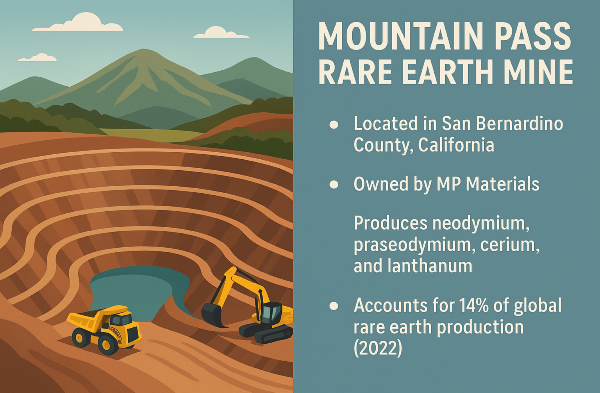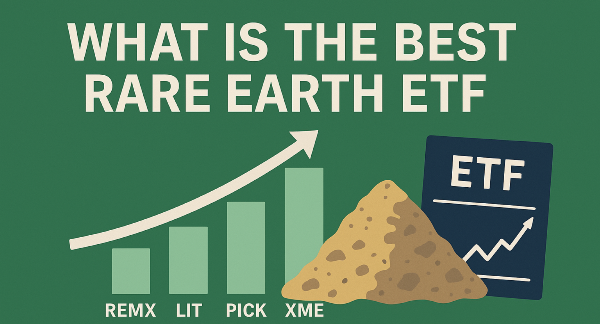Introduction
Dividend investing is a powerful strategy for generating passive income, allowing individuals to build wealth without actively working for every dollar earned. Many investors aim for $50,000 in annual dividend income as it provides financial stability and a potential pathway to early retirement or financial independence. Achieving this goal requires understanding how dividend yields impact the amount of capital needed—higher-yield stocks demand less investment, while lower-yielding, more stable companies require a larger portfolio. By strategically selecting dividend-paying stocks and optimizing reinvestment, investors can steadily grow their income stream and move closer to financial freedom.
Understanding Dividend Yields
What Is a Dividend Yield?
Dividend yield is a key metric in income investing, as it determines how much return an investor can expect in dividends relative to the stock price. Calculated using the formula Dividend Yield = Annual Dividend / Stock Price, this percentage helps investors assess the profitability of dividend-paying stocks. Yields vary across sectors—utilities and real estate investment trusts (REITs) often offer higher yields, while technology companies may prioritize growth over dividends. Understanding dividend yield allows investors to make informed choices when building a portfolio designed for passive income.
How Dividend Yield Affects Required Capital
The required capital to generate significant dividend income depends on the yield of the stocks selected. Lower-yield stocks, typically offering 2-3%, demand a larger investment, while higher-yield options in sectors like energy or financials may allow investors to reach their income goals with less upfront capital. However, chasing high-yield stocks can come with risks—some companies offer unsustainably high dividends that could be reduced in the future. A balanced approach, considering both yield and long-term stability, helps investors create a reliable dividend strategy for financial independence.
How Much Capital Is Needed?
Yield-Based Scenarios
The amount of capital needed to generate $50,000 in annual dividend income depends on the yield of the stocks in the portfolio. Higher-yield stocks require less initial investment, while lower-yield dividend payers demand a larger principal to achieve the same income. For example, at a 3% yield, an investor would need approximately $1,666,667, while a 6% yield would reduce the required capital to $833,333. Finding the right balance between yield and sustainability is crucial—stocks with extremely high yields may carry more risk, such as dividend cuts or market volatility. Investors should carefully assess historical yield trends and dividend reliability before allocating capital.
Diversification and Risk Considerations
Beyond yield considerations, diversification plays a vital role in building a stable dividend portfolio. Relying solely on high-yield stocks can expose an investor to industry-specific risks, especially if the sectors face downturns. A mix of high-yield stocks and steady dividend growers ensures income sustainability. Additionally, spreading investments across sectors such as consumer staples, healthcare, utilities, and technology can mitigate risks associated with economic cycles. Geographic diversification, including U.S., international, and emerging markets, further strengthens portfolio resilience, reducing dependence on any single economic environment. A well-diversified approach balances yield, stability, and long-term growth, increasing the likelihood of consistent dividend income for financial independence.
Strategies to Achieve $50,000 in Dividend Income
Dividend Growth Investing
Achieving $50,000 in annual dividend income requires a strategic approach that balances growth, yield, and sustainability. One of the most effective methods is dividend growth investing, where investors focus on companies that consistently increase their dividend payouts over time. By reinvesting dividends back into the portfolio, investors leverage compounding—accelerating income growth as new shares generate additional dividends. For example, a portfolio of dividend-growing stocks yielding 3% could, over time, increase its effective yield through consistent annual hikes, turning an initially modest income stream into a substantial, inflation-resistant cash flow.
High-Yield vs. Dividend Growth Stocks
Investors must weigh the trade-offs between high-yield stocks and dividend growth stocks. High-yield stocks provide immediate income but may carry risks such as dividend cuts or stagnant growth. In contrast, dividend growth stocks—often found in sectors like consumer staples, healthcare, and technology—offer long-term appreciation and income stability. Case studies of successful dividend investors reveal a common theme: combining both strategies can enhance returns while mitigating risk. A well-balanced portfolio with steady growers and selective high-yield holdings ensures consistent, reliable income, helping investors reach financial independence while maintaining resilience in market downturns.
Tax Efficiency and Optimization
Tax efficiency plays a crucial role in maximizing dividend income and ensuring long-term financial success. Dividend taxes can significantly impact net income, depending on factors such as income level and account type. In taxable brokerage accounts, qualified dividends are taxed at favorable long-term capital gains rates, while ordinary dividends are taxed at standard income tax rates. Investors can mitigate tax liabilities by leveraging tax-advantaged accounts such as Roth IRAs, which allow tax-free growth and withdrawals, and traditional IRAs, which offer tax-deferred growth. Choosing the right account type can enhance the sustainability of a dividend investing strategy while optimizing after-tax income.
Conclusion
In conclusion, achieving $50,000 in annual dividend income requires careful planning, from understanding dividend yields to selecting the right portfolio structure. Diversification across sectors, geographic regions, and dividend growth vs. high-yield stocks helps balance risk and stability. Investors must also consider tax efficiency to maximize returns. By researching and tailoring a dividend portfolio to fit their financial goals, investors can build a sustainable strategy that supports long-term financial independence. Whether focusing on compounding dividend growth or high-yield opportunities, a well-structured approach ensures steady passive income and a secure financial future.




























Introduction
Dividend investing is a powerful strategy for generating passive income, allowing individuals to build wealth without actively working for every dollar earned. Many investors aim for $50,000 in annual dividend income as it provides financial stability and a potential pathway to early retirement or financial independence. Achieving this goal requires understanding how dividend yields impact the amount of capital needed—higher-yield stocks demand less investment, while lower-yielding, more stable companies require a larger portfolio. By strategically selecting dividend-paying stocks and optimizing reinvestment, investors can steadily grow their income stream and move closer to financial freedom.
Understanding Dividend Yields
What Is a Dividend Yield?
Dividend yield is a key metric in income investing, as it determines how much return an investor can expect in dividends relative to the stock price. Calculated using the formula Dividend Yield = Annual Dividend / Stock Price, this percentage helps investors assess the profitability of dividend-paying stocks. Yields vary across sectors—utilities and real estate investment trusts (REITs) often offer higher yields, while technology companies may prioritize growth over dividends. Understanding dividend yield allows investors to make informed choices when building a portfolio designed for passive income.
How Dividend Yield Affects Required Capital
The required capital to generate significant dividend income depends on the yield of the stocks selected. Lower-yield stocks, typically offering 2-3%, demand a larger investment, while higher-yield options in sectors like energy or financials may allow investors to reach their income goals with less upfront capital. However, chasing high-yield stocks can come with risks—some companies offer unsustainably high dividends that could be reduced in the future. A balanced approach, considering both yield and long-term stability, helps investors create a reliable dividend strategy for financial independence.
How Much Capital Is Needed?
Yield-Based Scenarios
The amount of capital needed to generate $50,000 in annual dividend income depends on the yield of the stocks in the portfolio. Higher-yield stocks require less initial investment, while lower-yield dividend payers demand a larger principal to achieve the same income. For example, at a 3% yield, an investor would need approximately $1,666,667, while a 6% yield would reduce the required capital to $833,333. Finding the right balance between yield and sustainability is crucial—stocks with extremely high yields may carry more risk, such as dividend cuts or market volatility. Investors should carefully assess historical yield trends and dividend reliability before allocating capital.
Diversification and Risk Considerations
Beyond yield considerations, diversification plays a vital role in building a stable dividend portfolio. Relying solely on high-yield stocks can expose an investor to industry-specific risks, especially if the sectors face downturns. A mix of high-yield stocks and steady dividend growers ensures income sustainability. Additionally, spreading investments across sectors such as consumer staples, healthcare, utilities, and technology can mitigate risks associated with economic cycles. Geographic diversification, including U.S., international, and emerging markets, further strengthens portfolio resilience, reducing dependence on any single economic environment. A well-diversified approach balances yield, stability, and long-term growth, increasing the likelihood of consistent dividend income for financial independence.
Strategies to Achieve $50,000 in Dividend Income
Dividend Growth Investing
Achieving $50,000 in annual dividend income requires a strategic approach that balances growth, yield, and sustainability. One of the most effective methods is dividend growth investing, where investors focus on companies that consistently increase their dividend payouts over time. By reinvesting dividends back into the portfolio, investors leverage compounding—accelerating income growth as new shares generate additional dividends. For example, a portfolio of dividend-growing stocks yielding 3% could, over time, increase its effective yield through consistent annual hikes, turning an initially modest income stream into a substantial, inflation-resistant cash flow.
High-Yield vs. Dividend Growth Stocks
Investors must weigh the trade-offs between high-yield stocks and dividend growth stocks. High-yield stocks provide immediate income but may carry risks such as dividend cuts or stagnant growth. In contrast, dividend growth stocks—often found in sectors like consumer staples, healthcare, and technology—offer long-term appreciation and income stability. Case studies of successful dividend investors reveal a common theme: combining both strategies can enhance returns while mitigating risk. A well-balanced portfolio with steady growers and selective high-yield holdings ensures consistent, reliable income, helping investors reach financial independence while maintaining resilience in market downturns.
Tax Efficiency and Optimization
Tax efficiency plays a crucial role in maximizing dividend income and ensuring long-term financial success. Dividend taxes can significantly impact net income, depending on factors such as income level and account type. In taxable brokerage accounts, qualified dividends are taxed at favorable long-term capital gains rates, while ordinary dividends are taxed at standard income tax rates. Investors can mitigate tax liabilities by leveraging tax-advantaged accounts such as Roth IRAs, which allow tax-free growth and withdrawals, and traditional IRAs, which offer tax-deferred growth. Choosing the right account type can enhance the sustainability of a dividend investing strategy while optimizing after-tax income.
Conclusion
In conclusion, achieving $50,000 in annual dividend income requires careful planning, from understanding dividend yields to selecting the right portfolio structure. Diversification across sectors, geographic regions, and dividend growth vs. high-yield stocks helps balance risk and stability. Investors must also consider tax efficiency to maximize returns. By researching and tailoring a dividend portfolio to fit their financial goals, investors can build a sustainable strategy that supports long-term financial independence. Whether focusing on compounding dividend growth or high-yield opportunities, a well-structured approach ensures steady passive income and a secure financial future.